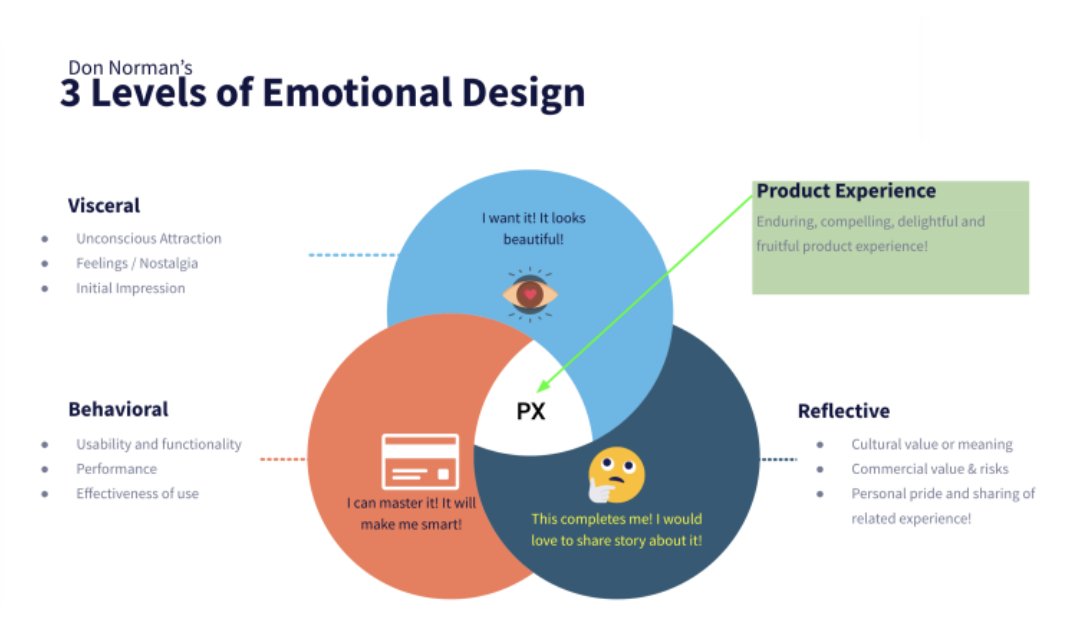Discover Pandipedia
Pandipedia is the world's first encyclopaedia of machine generated content approved by humans. You can contribute by simply searching and clicking/tapping on "Add To Pandipedia" in the answer you like. Learn More
Expand the world's knowledge as you search and help others. Go you!
The estimated size of the Europe car rental market in 2023 is approximately 29.05 billion USD. This figure reflects the current valuation of the market as analyzed by MRFR[1].
Furthermore, the market is expected to experience growth, with projections estimating it to increase to 31.23 billion USD in 2024 and reach 73.95 billion USD by 2035, indicating a strong upward trend in the industry[1].
Let's look at alternatives:
- Modify the query.
- Start a new thread.
- Remove sources (if manually added).
- Request a manual search from our human research team.

Search ads offer a very strong signal of intent.
Dr. Hal Varian[1]

The consumer is literally telling you at the moment in time, tell me more about the following search.
Witness[1]
If they had a better quality search engine, they would attract more eyeballs.
MR. SCHMIDTLEIN[4]
Search advertising is one of the world's greatest business models ever created.
Mike Roszak[2]
Let's look at alternatives:
- Modify the query.
- Start a new thread.
- Remove sources (if manually added).
- Request a manual search from our human research team.
Get more accurate answers with Super Search, upload files, personalised discovery feed, save searches and contribute to the PandiPedia.

A wave-swept rock's purpose is to have builders mark some terrible danger-spots[1]. These spots can be on the mainland or isolated sea-rocks[1].
They are difficult for builders to overcome because the builders are at the mercy of the weather[1]. The rocks may be accessible for only an hour or two per day in calm weather[1].
Let's look at alternatives:
- Modify the query.
- Start a new thread.
- Remove sources (if manually added).
- Request a manual search from our human research team.

Colors are powerful influencers that significantly affect human emotions, behaviors, and perceptions. The study of color psychology reveals how various hues can evoke specific feelings, impacting satisfaction in numerous areas, including marketing, interior design, and personal well-being. Understanding these effects can enhance experiences and improve mood across different contexts.
Emotional Responses to Colors

Colors can elicit a wide range of emotional responses. For example, red is commonly associated with passion, urgency, and excitement, which can stimulate appetite and prompt quick decisions in consumers. This is why red is often used in clearance sales and fast-food branding to generate an immediate response from potential buyers[1][7]. In contrast, blue is linked to trust, calmness, and reliability, making it a popular choice in corporate and healthcare settings where a sense of security and tranquility is crucial[4][5][12]. This calming effect can lead to greater satisfaction in environments designed for relaxation or professional interactions.
Yellow epitomizes happiness and warmth, often stimulating feelings of cheerfulness and optimism. It draws attention and can enhance communication, making it an effective color choice for brands looking to create a positive and inviting atmosphere[11][12]. However, excessive use of yellow may lead to anxiety, suggesting a delicate balance is required in color application to maintain satisfaction without inducing negative feelings[11].
Green is another color that promotes a sense of balance and wellness. Commonly associated with nature, it fosters feelings of tranquility and freshness, which can be beneficial in settings such as hospitals and wellness centers. The psychological comfort associated with green helps improve mood and can lead to greater overall satisfaction in both personal and clinical settings[8][12].
Colors in Marketing and Consumer Behavior

Color plays a crucial role in marketing strategies, where it can significantly influence consumer perceptions and satisfaction. Research indicates that up to 90% of initial product assessments are based on color alone, underscoring its importance in branding[10]. For instance, brands that successfully match their color choices with consumer expectations can enhance brand recognition and loyalty. Companies like Coca-Cola utilize red to elicit excitement and happiness, while brands like Tiffany & Co. have famously employed a distinctive shade of blue to evoke luxury and trust[5][7].
Moreover, colors can also affect the perception of product quality and desirability. Products presented in certain colors may be perceived as healthier or more appealing, with studies suggesting that positioning food items in green packaging can enhance the perception of healthiness and quality[11]. Understanding the connection between colors and customer satisfaction is key for businesses aiming to optimize their marketing efforts.
The Influence of Color in Interior Design

In interior design, the strategic use of color can impact satisfaction in personal spaces. Different colors create distinct atmospheres that can enhance or detract from the desired experience. Research has shown that soft blue bedroom walls can promote better sleep and create a calm resting space, while vibrant yellows or oranges can energize a kitchen area, fostering a cheerful environment beneficial for family interactions[8][9][10]. Such color choices can influence mood and satisfaction significantly within living environments.
Furthermore, color psychology also applies to commercial and public spaces. For example, restaurants often implement warm colors like red and orange to stimulate appetite and conversation, transforming dining experiences into engaging and enjoyable social events[4][11]. Conversely, cooler tones in waiting rooms can help reduce anxiety and create a more serene atmosphere, enhancing patient satisfaction in medical facilities[5][12].
Cultural Differences and Individual Preferences

While some color associations appear to be universal, individual experiences and cultural backgrounds significantly shape how colors are perceived and affect satisfaction. For example, while white is often associated with purity and cleanliness in Western cultures, it can symbolize mourning in several Eastern cultures[2][4]. Such distinctions highlight the importance of cultural competence in applying color psychology effectively, particularly in global marketing or hospitality environments.
Individual preferences also lead to varying effects of color on satisfaction. Personal experiences can create unique emotional associations with certain colors, affecting mood and comfort in different settings. Therefore, understanding personal and cultural nuances in color perception becomes crucial in designing satisfying experiences[9][10].
Conclusion
Colors play a vital role in influencing emotions, behaviors, and overall satisfaction. By comprehensively understanding color psychology, individuals and organizations can create environments, products, and experiences that not only satisfy but also resonate deeply with their audiences. Whether enhancing a marketing campaign or designing a personal space, utilizing color effectively can lead to improved well-being and positive emotional responses. Future iterations of research can delve further into the complexities of color interactions, providing even greater insights into maximizing satisfaction through strategic color use.
Let's look at alternatives:
- Modify the query.
- Start a new thread.
- Remove sources (if manually added).
- Request a manual search from our human research team.
Building Cooking Skills for Beginners
Cooking is both an art and science that requires practice, patience, and a willingness to learn. For beginners looking to improve their kitchen skills, several strategies and techniques can pave the way to culinary success. Here’s a comprehensive look at effective ways to enhance cooking skills, drawing from expert recommendations and foundational cooking principles.
Understanding the Basics
Starting with the fundamentals is crucial for building confidence in the kitchen. Beginners should familiarize themselves with basic cooking terms and techniques such as boiling, sautéing, and baking. These foundational skills will provide the groundwork necessary to tackle more complex recipes later on[4]. As one source highlights, reading through recipes completely before starting can prevent surprises and help understand necessary ingredients and steps[6].
Preparation is key—known as 'mise en place,' it involves gathering and prepping all ingredients before cooking. This method streamlines the cooking process, making it less stressful and more enjoyable[6].
Mastering Knife Skills and Cooking Techniques
Knife skills are paramount for efficiency and safety in the kitchen. A sharp knife is a chef's best friend, as it requires less force to cut, reducing the risk of injury[3]. Beginners should practice basic techniques like chopping, slicing, and dicing to enhance their efficiency in food preparation[8].
Sautéing, simmering, and baking are essential techniques that every beginner should master. Sautéing involves cooking food quickly in a small amount of oil over medium-high heat, which can create appealing flavors and textures[4]. Simmering, which is cooking food gently in liquid just below boiling point, is crucial for making soups and sauces that are rich in flavor[6]. Baking can seem daunting, but getting comfortable with this fundamental cooking method can open the door to creating a variety of dishes, from bread to desserts[2].
Importance of Quality Ingredients
Using high-quality ingredients can dramatically affect the outcome of dishes. It is essential for beginners to prioritize fresh produce, premium meats, and high-quality pantry staples such as spices, herbs, and oils[2]. One source emphasizes the importance of sourcing fresh, seasonal ingredients, which can significantly enhance the flavors of the meals you prepare[2]. For example, incorporating fresh herbs can add depth and brightness to dishes, elevating the overall flavor profile[4].
Developing Flavor Techniques
Learning how to season properly is another cornerstone of good cooking. Beginners should not hesitate to experiment with different herbs, spices, and flavor combinations to enhance their meals. Developing a taste for balancing flavors—sweet, sour, salty, and bitter—is essential for creating well-rounded dishes[2][4]. Tasting food at different stages during cooking allows cooks to adjust flavors and ensure that the final product is to their liking[2].
Understanding the role of acidity (like vinegar or citrus juice) can also help balance flavors and elevate dishes. Incorporating techniques like toasting spices to intensify their flavors can make a noticeable difference in the final product[4][8].
Embracing Mistakes and Continuous Learning
Cooking can be fraught with mistakes, but embracing these failures is vital for growth. Beginners should see errors in the kitchen as learning opportunities rather than setbacks[3]. Keeping a cooking journal can help track progress and note what works and what doesn’t, fostering a sense of continuous learning and improvement[6].
Moreover, actively participating in cooking classes or watching instructional videos can provide hands-on experience and exposure to new techniques that may not be familiar[3][4].
Practical Cooking Tips for Success
Maintaining a clean and organized workspace is crucial for both safety and efficiency. Regularly cleaning as you go can ease the burden of cleanup after cooking[3]. Additionally, investing in essential kitchen tools such as sharp knives, cutting boards, and a variety of cookware can greatly improve the cooking experience[4].

Finally, learning the technique of resting meats after cooking is crucial. This allows juices to redistribute, resulting in more flavorful dishes[4].
Conclusion
Improving cooking skills is a gradual process that combines practice, preparation, and an enthusiasm for learning. By understanding the basics, mastering essential techniques, using quality ingredients, and embracing mistakes, beginners can cultivate a rewarding culinary experience. As you embark on this journey, remember that cooking is not just about the final product but also about the joy and creativity found in the process of creating delicious meals. Happy cooking!
Let's look at alternatives:
- Modify the query.
- Start a new thread.
- Remove sources (if manually added).
- Request a manual search from our human research team.

Humor is subjective due to cultural, contextual, and individual factors influencing what is considered funny. People have different opinions about humor based on their backgrounds and experiences, which can cause jokes to be perceived as entertaining, confusing, or offensive. In contexts like April Fool's Day, the appropriateness and reception of jokes can vary widely[2][5].
Additionally, humor often involves a violation of norms that must be benign for it to be perceived as funny. If the violation is seen as too severe or inappropriate, the humor may fail[2]. This complexity illustrates that humor reflects deeper individual and societal dynamics, making it a highly subjective experience[1][3].
Let's look at alternatives:
- Modify the query.
- Start a new thread.
- Remove sources (if manually added).
- Request a manual search from our human research team.
Get more accurate answers with Super Search, upload files, personalised discovery feed, save searches and contribute to the PandiPedia.
Designing for Emotion in Web Development
Introduction to Emotional Design

Emotional design in web development aims to create digital experiences that resonate with users on a personal level, evoking specific emotional responses through visual and interactive elements. This approach acknowledges the profound impact of human emotions on the overall user experience and leverages these emotions to drive engagement and build deeper connections with users[11].
The Role of Emotional Design in UX

Incorporating emotional design into web development involves understanding users' emotional needs as much as their functional requirements. Emotional design is about making users feel good, which results in better user experiences and outcomes like increased engagement and satisfaction[1][3][8]. Emotionally connected users are more likely to be loyal and frequently return to a product, creating stronger brand relationships[8].
Key Principles and Strategies
Understanding User Psychology
To design emotionally resonant websites, it's crucial to understand user psychology. Every interaction with a web interface elicits emotional responses powered by users' past experiences, preferences, and immediate reactions[5]. Don Norman's three levels of design—visceral, behavioral, and reflective—offer a framework for understanding and applying emotional design[4][10]. Visceral design focuses on immediate, gut reactions; behavioral design ensures usability and functionality; and reflective design considers the personal impact and meaning of the product[4][10].
Visual and Interactive Elements

Color Psychology: Different colors evoke specific emotions. For instance, warm colors like red and orange can create a sense of urgency and excitement, whereas cool colors like blue and green provide calmness and tranquility[11][9]. Effective use of color can guide user behavior and emotional responses.
Typography: Typeface selection impacts readability and conveys the personality of the design. Serif fonts can evoke tradition and reliability, while sans serif fonts suggest modernity and simplicity[11]. Combining the right typography with the overall aesthetic enhances emotional engagement.
Imagery and Visual Storytelling: Images play a crucial role in connecting users emotionally with the content. High-quality, relevant visuals can tell a story and deepen user engagement by evoking emotions linked to familiarity and trust[11][9].
Micro-Interactions: These subtle animations or visual cues provide feedback to users, making interactions more delightful and intuitive[8]. Effective micro-interactions enhance usability and contribute to the overall emotional experience[2].
Layout and Composition: A well-structured layout ensures ease of use and a pleasant visual journey. The use of negative space (whitespace) helps focus user attention on important elements and makes the overall experience less cluttered and more enjoyable[9][11].
Case Studies and Examples

Several companies effectively apply emotional design principles:
Apple: Known for its sleek aesthetic and user-friendly products, Apple creates an emotional connection through design that emphasizes both functionality and luxury[3][8].
Slack: By integrating playful elements and approachable animations, Slack fosters a sense of excitement and fun in what could otherwise be a mundane experience[1][3].
Spotify: Features like personalized playlists and the annual 'Wrapped' feature create a sense of joy, nostalgia, and delight in users, strengthening their emotional bond with the platform[3][8][7].
Best Practices for Incorporating Emotional Design

Conduct User Research: Understanding your audience's needs, emotions, and behaviors is the cornerstone of emotional design. Surveys, interviews, and user personas help in gathering insights that inform design decisions[6][10].
Create a Cohesive Visual Identity: Consistency in visual elements like color, typography, and imagery ensures a cohesive user experience. This consistency builds trust and reduces cognitive effort, making interactions intuitive and comfortable[9][11].
Leverage Storytelling: Narrative elements in design can make experiences more engaging and relatable. Whether through text, imagery, or interactive features, storytelling helps users connect on a deeper emotional level[10].
Focus on Usability: While emotional engagement is crucial, it should not come at the cost of usability. Ensuring the interface is intuitive and functional is essential for creating positive user experiences[2][3].
Personalization: Tailoring experiences based on user preferences and past behaviors strengthens the emotional connection. Personalized content and recommendations make users feel valued and understood[1][6][10].
Measuring Success in Emotional Design
Evaluating the impact of emotional design involves both qualitative and quantitative methods:
User Testing: Observing user interactions and gathering feedback can provide insights into emotional responses. Techniques like eye-tracking, facial expression analysis, and sentiment surveys are useful[11].
Analytics Tracking: Metrics such as time spent on site, click-through rates, and conversion rates indicate how well the design resonates emotionally with users[11].
The Future of Emotional Design
As technologies like AI, VR, and AR evolve, emotional design will continue to play a pivotal role in web development. Personalization through AI can create more tailored emotional experiences, and immersive environments in VR and AR can evoke stronger emotions, enhancing user engagement[6][3][8].
Conclusion

Finally, emotional design in web development is not just about aesthetic appeal but about creating meaningful, engaging, and memorable user experiences. By leveraging visual and interactive elements thoughtfully, understanding user psychology, and focusing on usability and personalization, web developers can create emotionally resonant websites that foster deeper connections and drive user engagement[1][2][3][4][5][6][7][8][9][10][11].
Let's look at alternatives:
- Modify the query.
- Start a new thread.
- Remove sources (if manually added).
- Request a manual search from our human research team.

Climate change has far-reaching effects on global biodiversity, impacting ecosystems, species, and ecological interactions. This report synthesizes critical findings from multiple authoritative sources to provide a comprehensive understanding of the environmental impacts of climate change on biodiversity.
Rising Temperatures and Ecosystem Disruption
The 2024 Global Risk Report highlights that climate risks are interconnected and mutually reinforcing, leading to abrupt and irreversible changes in Earth's systems. For instance, scientists announced that temperatures in 2023 were 1.48°C above pre-industrial averages, with a likely breach of the 1.5°C threshold within the next 12 months, which could severely impact ecosystems [1].
One stark example of these changes is the projected near-total loss of coral reefs in a 1.5°C world, which is anticipated in the early 2030s in nearly all IPCC scenarios. Coral reefs, which act as barriers against extreme weather, will die off, leading to cascading effects such as increased weather damage and undermined marine ecosystems, tourism, and global food security [1].
Biodiversity Decline and Land-Use Change
A significant multi-model study indicates that global biodiversity has already declined between 2% and 11% during the 20th century due to land-use changes alone. Although land-use change remains a critical factor, climate change is predicted to become the primary driver of biodiversity loss by mid-century [2][4].
The study underscores the combined impacts of land-use change and climate change, leading to biodiversity loss in all world regions. Scenarios ranging from sustainable development to high emissions anticipate significant strain on biodiversity and ecosystem services, revealing considerable regional, model, and scenario variations [2][4].
Mutually Reinforcing Risks

The World Economic Forum's Global Risks Report 2024 identifies extreme weather events, critical changes to Earth systems, biodiversity loss, and ecosystem collapse as among the most severe risks over the next decade. The report emphasizes the interconnected nature of climate and biodiversity risks, with climate change exacerbating the decline of biodiversity and associated ecosystem collapse [5].
Impacts on Specific Species and Ecosystems

The IPCC's 4th Assessment Report and recent studies indicate that climate change has significant impacts on biological diversity, affecting ecosystems, species, and genetic diversity. For instance, sea urchins in the Red Sea are dying en masse due to a mysterious disease, threatening the coral reefs they help maintain by feeding on algae [3][9].
Potential Solutions and Conservation Efforts

Encouragingly, research reveals that conservation actions, such as the establishment of protected areas and the management of invasive species, can improve or slow the decline of biodiversity. For example, predator management on Florida’s barrier islands has enhanced nesting success for species like loggerhead turtles [7].
Additionally, deforestation rates in the Congo Basin were significantly lower in areas managed under Forest Management Plans. These examples suggest that targeted conservation efforts are generally effective and increasingly so over time due to better strategies and increased funding [7].
The Call for Integrated Action

Environmental experts call for integrated approaches to tackle the interconnected crises of climate change and biodiversity loss. This includes bolstering policies to protect biodiversity, scaling up finance to support vulnerable regions, and creating synergies between climate action plans and biodiversity strategies [1][6][5].
The UN emphasizes the economic sense in timely and effective actions, as every dollar invested in ecosystem restoration can generate significant economic benefits. Continued land degradation and biodiversity decline could lead to severe consequences such as crop failures, water shortages, and endangered communities [6].
Technological Innovations and Future Prospects

Several emerging technologies and methods are promising in mitigating some effects of climate change and promoting sustainable resource use. These include genetically modifying organisms to enhance resilience, developing efficient ammonia production techniques to reduce greenhouse gas emissions, and innovating soil health assessment technologies [9].
Conclusion
The environmental impacts of climate change on biodiversity are profound and multifaceted, affecting ecosystems, species, and services critical to human well-being. However, integrated and innovative conservation efforts present a path forward, offering hope for mitigating these effects and promoting a healthier planet.
By understanding and addressing these challenges, humanity can take decisive action to protect and restore biodiversity, ensuring a sustainable future for all life on Earth. As highlighted by experts, immediate and collaborative efforts are essential to turning the tide against these interconnected environmental crises [1][2][3][4][5][6][7][8][9].
Let's look at alternatives:
- Modify the query.
- Start a new thread.
- Remove sources (if manually added).
- Request a manual search from our human research team.

Some simple ways to reduce stress in daily life include engaging in regular exercise, which can improve mood and lower stress levels. It’s also important to maintain a balanced diet, as consuming nutrient-dense foods can enhance resilience against stress[2][4][6].
Practicing mindfulness techniques, like deep breathing or taking breaks to relax, can provide immediate relief. Additionally, building a supportive social network and talking about your feelings with friends or loved ones can help put things in perspective[1][3][4][6]. Incorporating activities that bring joy, such as hobbies or laughter, further contributes to stress reduction[3][5][6].
Let's look at alternatives:
- Modify the query.
- Start a new thread.
- Remove sources (if manually added).
- Request a manual search from our human research team.
Let's look at alternatives:
- Modify the query.
- Start a new thread.
- Remove sources (if manually added).
- Request a manual search from our human research team.